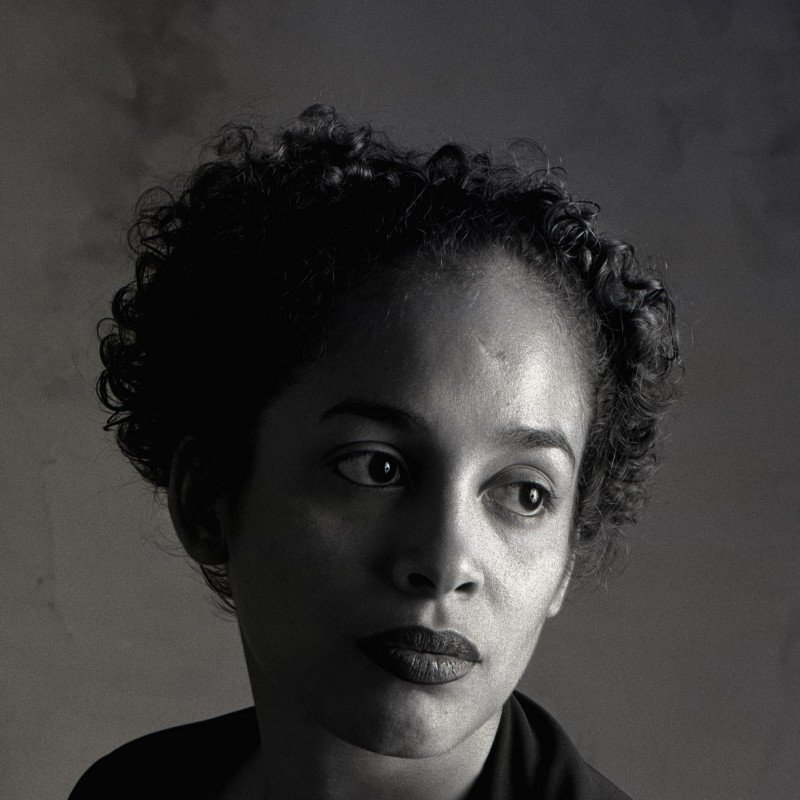Ebelin Ortiz in my studio | Circa 2000 © Coco Martin
Shot on medium format, black and white film
There is no other side behind the mirror
Part II
by Coco Martin
April, 2019
[English and Spanish]
We may technically understand a portrait as lights and shadows colliding; or poetically as that incidental dance of chiaroscuro that could never steal our soul.
Portraiture is unable to summarize everything about the subject and photographers can only deal within the limits of the evidence. Asking for more would lead to acknowledge too much merit or power over the media or to overrate romanticized skill they don’t possess. In exchange, a portrait certainly can embed memories and trigger, when ready, the need to free them instead.
If resonates with you by consistently make you go back in time or opens some windows or removes any superficial mask you put on, then is when a portrait gets its meaning. And it’s always personal; and temporal.
Who is not immune to this outcome either is the portraitist, even if the task is casually or periodically done. His or her retina will be impregnated with a layer that is not always an accurate or faithful representation, the one is wearing a public makeup. An idealization will be always present in a preconceived draft from the author, who’s performance has to be fully understood and acknowledged by the model.
In this interview on national television, Ebelin Ortiz, an outstanding afroperuvian actress and singer, welcomes her pause while being confronted to a portrait I took almost 20 years ago, and graciously loses her epidermis facing the passing of time and her inner memories, sparking a question from the interviewer.
She sees something we don’t. We, from distance, get to see what is left. The photographer sees harmonious shadows only. Some more, others less. There is nothing behind that mirror where we observe ourselves with a non-optical gaze, ignoring our own retinas. A depth perception with eyes fully closed. And so is fine.
Screenshot from the interview
“She sees something we don’t … The photographer only sees harmonious shadows.”
Un retrato puede ser entendido técnicamente como una colisión entre la luz y la sombra; o poéticamente como una mirada incidental de esa danza del claroscuro que nunca roba el alma.
Así como un fotógrafo no puede capturar nada más que lo evidente, un retrato no puede resumirlo todo — esperar más sería otorgarles demasiado mérito o un poder inexistente o recurrir a una idea romantizada. A cambio, si, puede encerrar memorias para, llegado el momento, decidir liberarlas.
Cuando ves tu propio retrato y evocas, o sientes que te hace abrir ventanas o te remueve alguna máscara, es que adquiere algún significado. Y este siempre es personal. Y temporal.
El retratista no es ajeno a estas consecuencias, inclusive si su actividad es eventual o constante. Este igual impregna su retina con esa capa pública y maquillada que no siempre es la que más representa o la más fiel. Detrás habita una idealización, una suerte de boceto preconcebido por el autor, que necesita el consentimiento y la complicidad del retratado.
En esta entrevista en televisión nacional, Ebelin Ortiz, talentosa actriz y cantante afroperuana, sucumbe a una propia pausa al ver su retrato — casi veinte años después — dejando elegantemente caer esa epidermis; y se enfrenta a sus memorias que deja el tiempo y que motivan la repregunta de su interlocutora.
Ella ve algo que nosotros no. Nosotros, a distancia, apenas lo que se nos permite. El fotógrafo, solo sus sombras armonizadas. Unos más, otros menos. No hay nada más detrás de ese espejo imaginario que una mirada sin retina, es decir, una profunda percepción con los ojos cerrados. Y así está bien.
Ebelin Ortiz in my studio | Circa 2000 © Coco Martin
Shot on medium format, black and white film
Full interview link here
https://www.youtube.com/watch?v=dbOIXTemGVk
Minute 3’30” (Spanish only)



